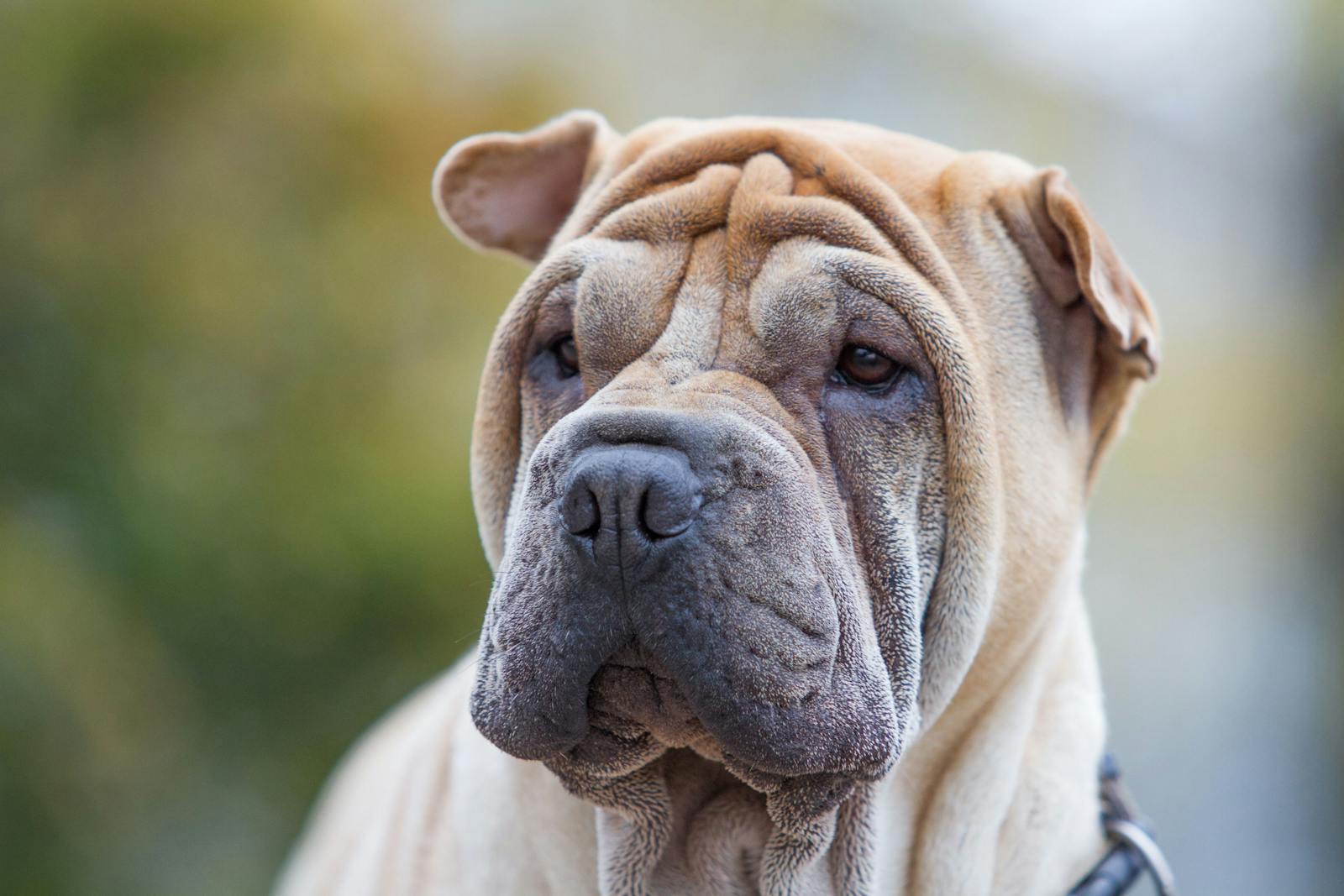Meatmouth Shar Pei

Myths and stories
There are more myths and stories around about the meatmouth than scientific facts.
But what do we actually know?
We know that in all SharPeis, Chinese and Western, a mutation of the regulatory gene HAS2 on chromosome 13 is present at least twice. We know that the higher the number of copies of the mutation, the higher is the formation of hyaluronic acid, which accumulates in the tissue. The skin becomes fainter, thicker, contains more water and produces more wrinkles and a thick muzzle.
Genetic mutations are not bad per se and occur naturally. For example, it was genetic mutations that made the first dogs trusting at all, as recent genetic studies have shown. The underlying mutation in the HAS2 regulatory gene on chromosome 13 in Shar Pei did not have an artificial origin and occurred naturally at a point in time that is still unknown. The first reliable descriptions of the breed, from the mid-18th century, describe the loose skin and wrinkles of the puppies. It is precisely this mutation that is responsible for the characteristic appearance of the breed.
Reports from old Chinese indicate that spontaneous further mutations must have "always" occurred in the Shar Pei. An old farmer in a remote part of Yunnan told me some years ago that there were Shar Pei in his village when he was a boy. And every few years there was a dog in a litter that was way more wrinkled and had a meaty nose. Since such a dog was very rare, they were considered lucky dogs in his village. There are several reports similar to this one.
Older breeder in China generally do not have a comprehensive genetic background, but have drawn conclusions from years of observation of the breed that align with our western genetics research. The more meat and skin a dog has, the higher the likelihood that its offspring will get sick. This is one of the reasons why meatier dogs are not used in the breeding of the Chinese "Dali Shar Pei" breeders today.
In the 1990s, meatmouth Shar Peis appeared in China, mostly from Hong Kong. Back then some breeders bred meatmouths out of economic hardship, in addition to the more common chinese type, because at that time in China the market for these dogs was bigger than that for the “bonier” dogs.
Thanks to genetic research, we know that the mutation affecting hyaluronic acid production is present in all SharPeis. The logical conclusion, then, is that most of the stories surrounding the genesis of the meatmouth Shar Pei are myths, often used as a simple explanation, but are not true.
Fortunately, for some time now there has been a test that can tell us the number of copies of this one mutation. Luckily there are more and more responsible breeders, trying with all possible tools to get the western meatmouth Shar Pei back on a healthier track. These breeders should be respected for this sometimes not too easy task.
Conclusion : The meatmouth Shar Pei is as much a Shar Pei like the chinesische Shar Pei, as long as he fits the FCI standard.
